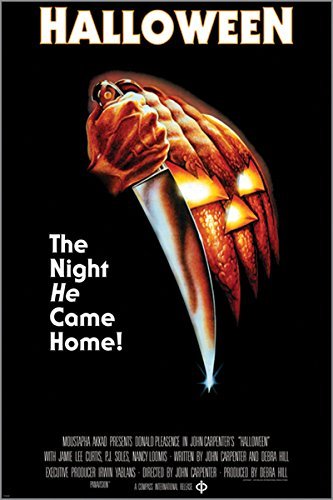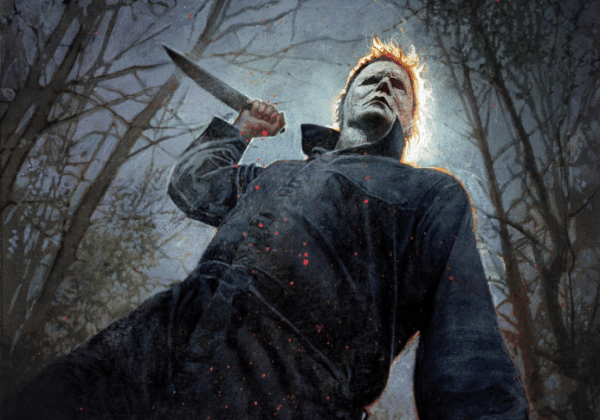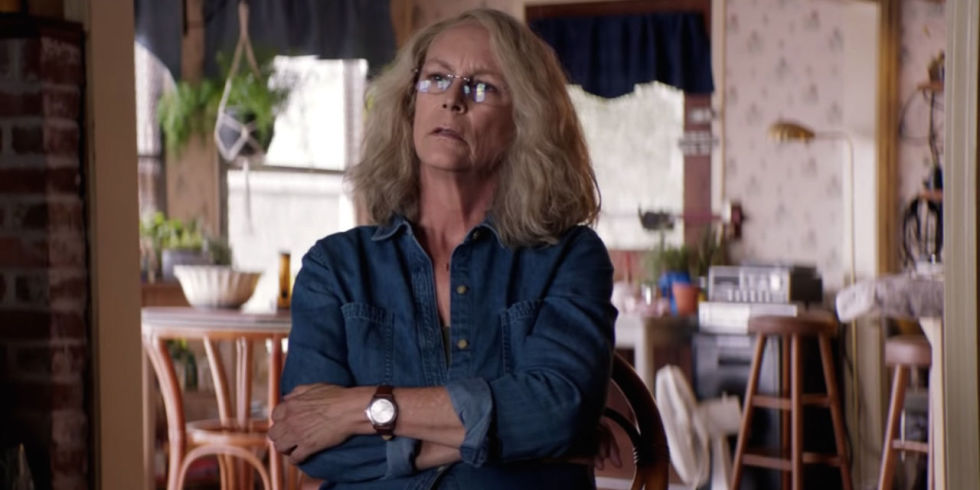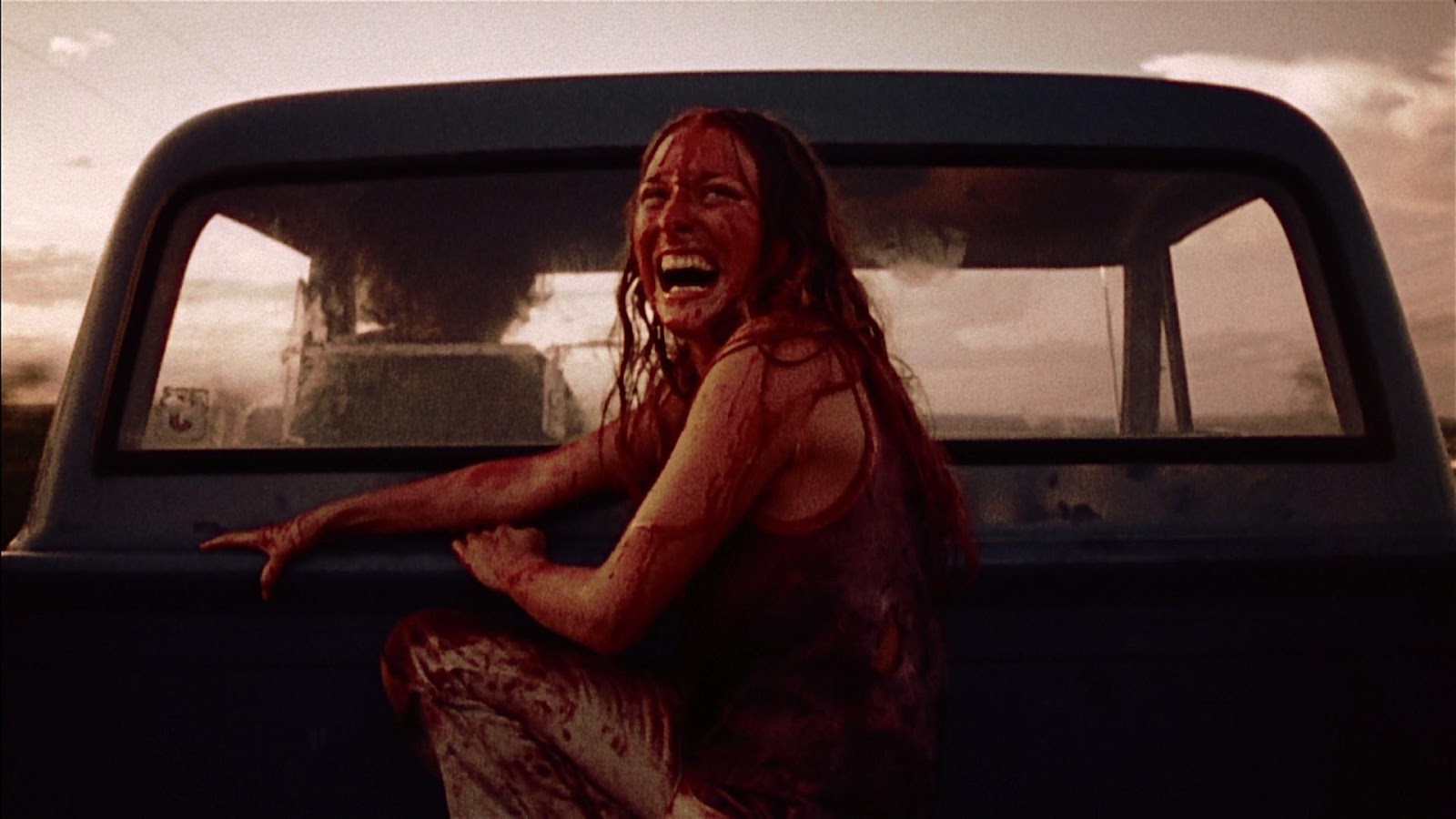John Carpenter’s Halloween is more than just a classic horror film. Forty years after its release, it remains an iconic and revolutionary piece of cinema, one that any number of modern films have been heavily influenced by. It’s no coincidence that two of the best horror films of the last decade, It Follows and Hereditary, both feature exact recreations of Laurie’s early classroom scene from Carpenter’s film: Halloween has been the go-to teacher for a whole generation of filmmakers looking to make suspense and horror films of their own.
This begins to get to the root of the problem that has been plaguing the producers of the Halloween franchise for decades; how do you follow-up Halloween?

I don’t say that the franchise has been plagued by this problem for years to insinuate that the franchise has just carried on not being very good (although that isn’t not true), I say this to say that the franchise itself as continuously hit the reboot button in an attempt to start from scratch and get closer to its source, only to find itself facing this exact same question time and time again.
The first attempt came in the form of 1981’s Halloween II, a Rick Rosenthal-directed, Carpenter-penned sequel that certainly has its merits but is objectively a much lesser film than its predecessor. Carpenter pretty much immediately disowned the film, saying he only wrote the script in an attempt to earn back the money he wasn’t compensated for from the original film and that his muse throughout the process was a six-pack of beers per night. Despite all of this, the film was an immense success. Yet, Carpenter and his producing partner, all-around badass Debra Hill, wanted more.
They convinced Universal to take the franchise in an entirely different direction with 1982’s Halloween III: Season of the Witch, a completely unconnected film that was set to turn the franchise into a Twilight Zone-esque anthology series, in which each entry would further explore the traditions of the holiday. Season of the Witch was a genuinely wonderful film and probably the best guess at how to fruitfully artistically continue the franchise; go in a completely different direction. Alas, audiences weren’t fond of the film not featuring Michael Myers and it landed with a resounding flop at the box office.

Ever since then, the franchise has been stuck in essentially the same mold. 1988’s Halloween 4: The Return of Michael Myers ignored the third film and attempted to be a true sequel to the original film. The seventh film, 1998’s Halloween H20: Twenty Years Later disregarded all of the events from the prior four films, in an attempt to be a true sequel to the original. Rob Zombie’s remake in 2007 opted to completely redo the entire thing, in an attempt to create a film that could act as a true spiritual follow-up to the original.
All of this resulted in the films being trapped in a sense of stasis. About every third film would just completely undo whatever the previous films had attempted to do and reset things to the status quo, essentially leaving the franchise doomed to continue attempting to figure out how to follow-up Carpenter’s original for decades. The resulting franchise is full of would-be Carpenter-imitators (without the craft or care) simply retreading the bare bones of the original’s plot (without ever taking the time to understand what they actually meant).
Which brings us to the newest installment in the franchise, Blumhouse’s David Gordon Green-directed Halloween. At first glance, the new film may seem like just another in a long line of attempts to answer that looming question. It reboots the continuity once again, this time literally writing every single one of the other films other than Carpenter’s original, out of continuity.
But miraculously, the new film manages to finally deliver a worthy sequel through one distinct difference: it doesn’t give in to fan expectations, it challenges them.

To put this into more layman’s terms, it would have been incredibly easy and lucrative for Blumhouse to simply create a legacy sequel of a Halloween film, in the vein of Star Wars: The Force Awakens. A good film with a strong director that features tons of fan service and capitalizes on nostalgia for the property by hitting on familiar plot beats and trotting out iconic characters in the way audiences remember them. But that isn’t actually what they did. Instead, the new film is an unabashed love letter not to the original film itself but to the creativity behind the original film that weaponizes fan expectations for its own gain, cleverly subverting them all the while, in the vein of Star Wars: The Last Jedi.
For an example, let’s return to that iconic early scene of Laurie Strode in the classroom from the original film, a moment so ingrained into the basics of horror cinema that several filmmakers since have copied-and-pasted it into their own films, both inside and outside of the Halloween franchise.. In the original film, Laurie sits at the back of her class next to a window as her teacher gives a lecture about fate. Laurie absent-mindedly gazes out the window to see Michael Myers sitting in his stolen car, watching her.
Now let’s take a look at how the new film utilizes this scene. Allyson, Laurie’s granddaughter is seated at the back of her class, next to the window, as he teaches gives an incredibly similar lecture about the subject of fate. Allyson absent-mindedly gazes out of the window, and the answer seems obvious; Michael is going to be there. But it isn’t. Instead, it’s Laurie.

This goes beyond a simple bait-and-switch tactic, as the new film uses these moments of subverted expectation to further both its narrative text and its thematic subtext through the film. This reveal of Laurie outside the classroom leads to one of the film’s best scenes, a heartfelt conversation between grandmother and granddaughter, in which Laurie quite literally urges her descendant to not make the same choices she did, telling her to “fuck college” and instead use her money to travel abroad.
In another great example of how these subversions actually improve the film, a alter sequence sees Allyson running from her life from Michael Myers, screaming for help. It is a distinct callback to the scene in the original film’s third act, where Laurie runs through the streets crying for help, only to be ignored as a mere trick-or-treating prank by her neighbors. So as Allyson runs down the street screaming and banging on doors, the audience feels confident in assuming she’ll suffer the same fate. But instead, one of the first doors she knocks on opens up and protects her until the police arrive. This speaks to a larger dynamic shift within the film itself. Whereas Carpenter’s film isolated Laurie across the course of the film, portraying the police force as inept-at-best and her neighbors as accomplices to murder at-worst, Green’s film begins with Laurie isolated and slowly repopulates her life.
She begins the film haunted by trauma, holed up in her bunker-of-a-house and with a very strained relationship with her daughter Karen, who works to actively keep her from seeing her granddaughter Allyson. As the plot escalates, Karen and Allyson both grow closer to Laurie as they are able to, for the first time, understand the trauma she went through.
In the third act, the Strode women are only able to defeat Michael together. They trap him in the cellar as Karen and Allyson realize what Laurie has been trying to tell them for years; the house wasn’t her cage, it was her weapon. In weaponizing Michael’s own expectations against him, just as the film does to the audience, Laurie is able to outsmart him and burn the house to the ground with him inside.
Which is what makes the film’s final moments so perfect. The house that has become a symbol of all of Laurie’s trauma is burned to the ground with the so-called boogieman trapped within. Sure, the sequels to this film will undoubtedly take on a more literal reading of the frame with Michael missing from the spot where he was trapped, such as he was able to escape. But the thematic reading here is pretty clear; with the help of her family, Laurie has grown past her trauma and fear of him, which means he has no power here. Without fear, Michael Myers is reduced to literal nothingness. The final shot of all three Strode women in the back bed of a truck, making their escape serves as the film’s most perfect moment of meta-commentary. In recreating the final moment of the original The Texas Chain Saw Massacre, one of the first-ever films to establish the ‘final girl’ trope, Green’s Halloween is able to deliver a commentary on the trope and the horror genre as a whole. Whereas Sally, the final girl in Texas Chain Saw was alone and driven to insanity by the events that happened to her, Laurie is literally surrounded here by loving family members who are with her in solidarity.

David Gordon Green’s Halloween manages to further the progress of the Halloween franchise more over the course of two-hours than nine previous films did over the course of forty years. In committing to the creativity and boldness behind Carpenter’s original film rather than the franchise itself, the new Halloween film is able to firmly stand on its own, challenging and subverting fan expectations at every turn in the interest of furthering the subtext. In breaking the mold that was forged thirty-some years ago with the box-office failure of Season of the Witch, Green’s Halloween manages to be not only one of the best Halloween films but also one of the best horror films of the decade, period.
Which of course means that the producers behind the franchise are about to find themselves facing that exact same question once again, but with a bit of a twist; how do you follow up Halloween?